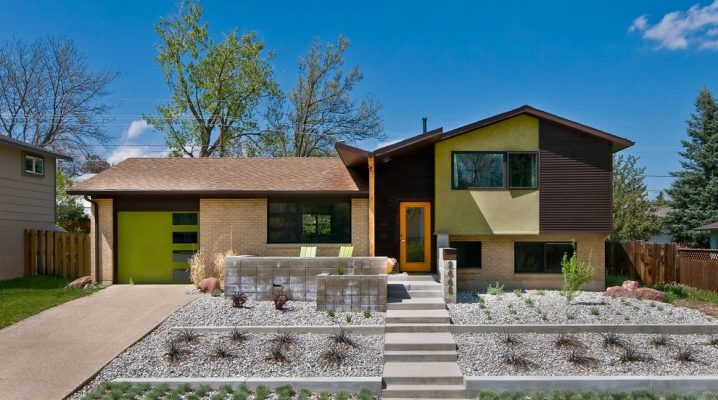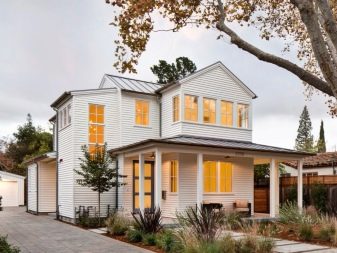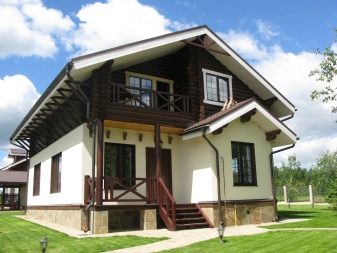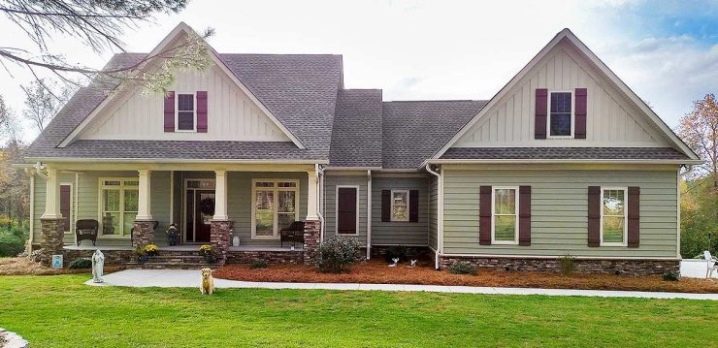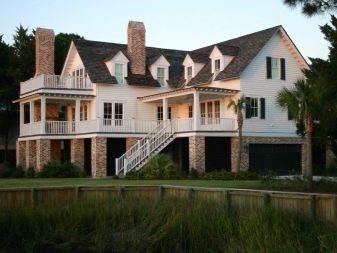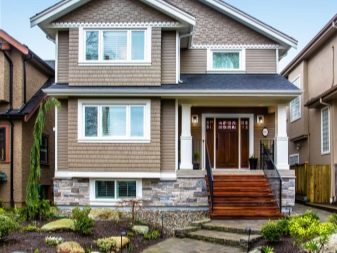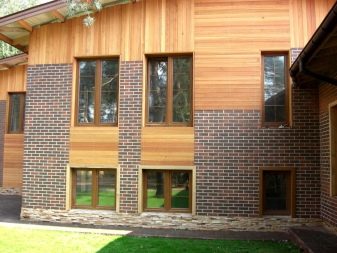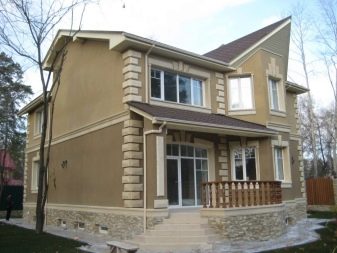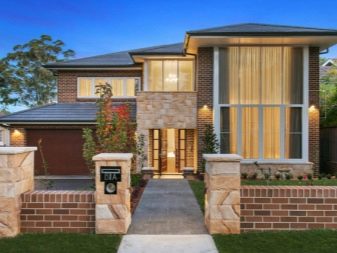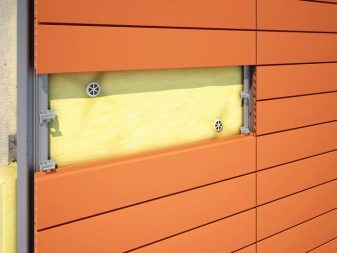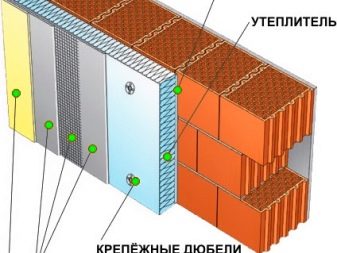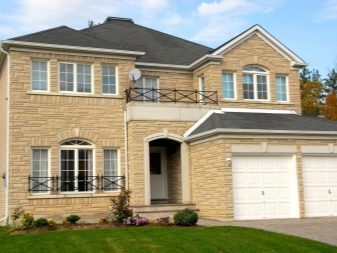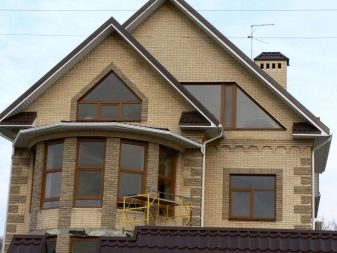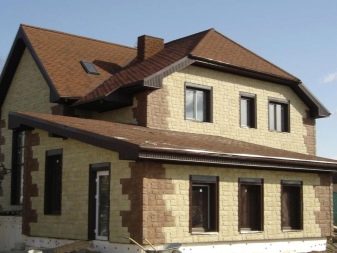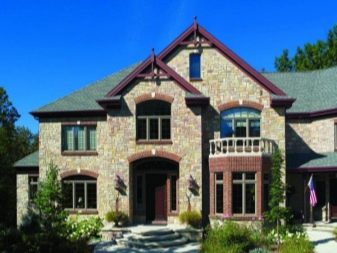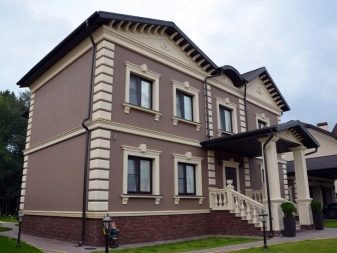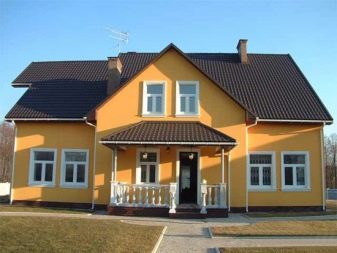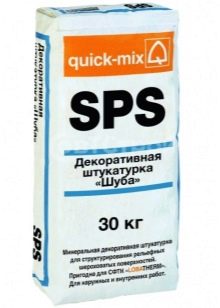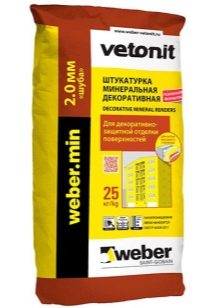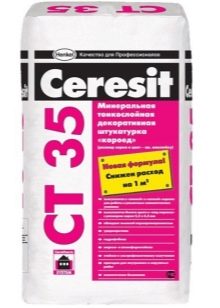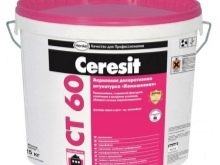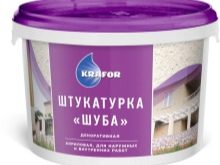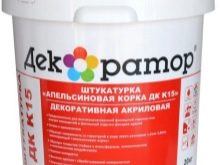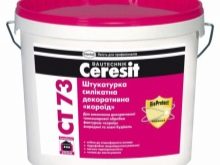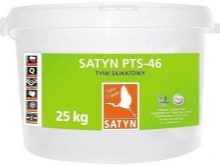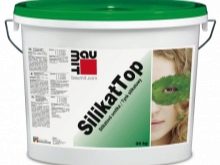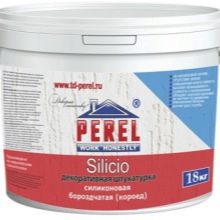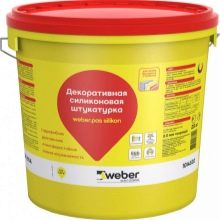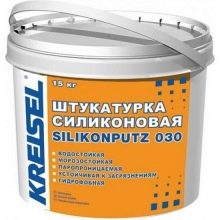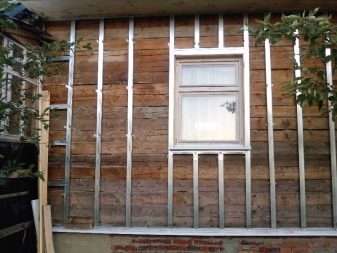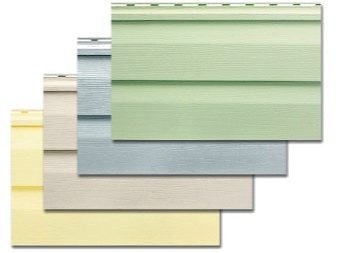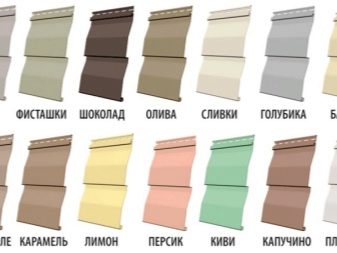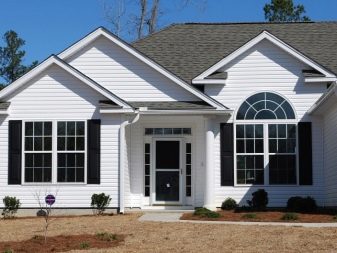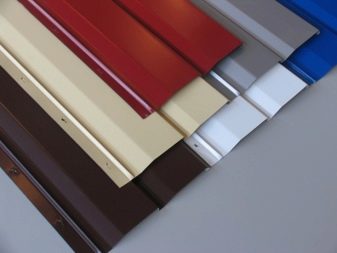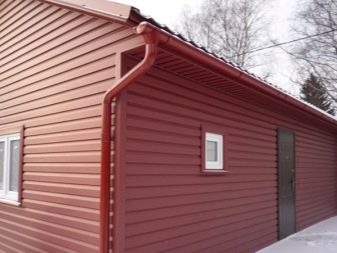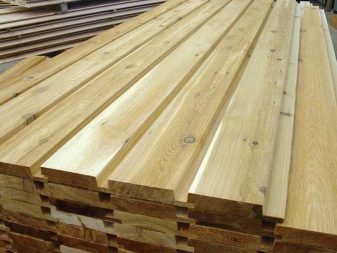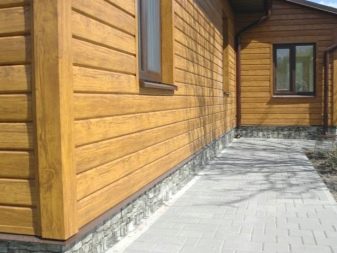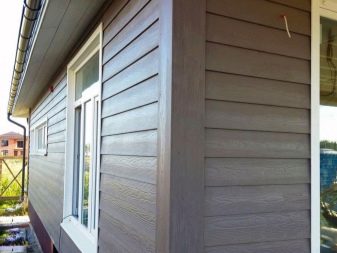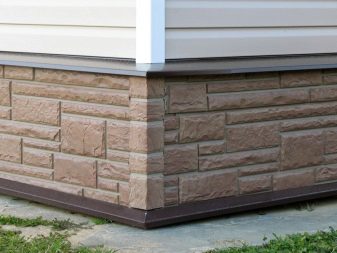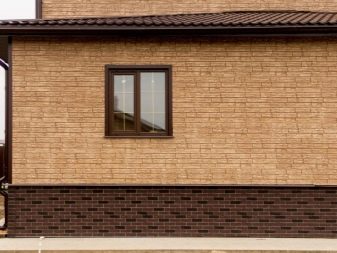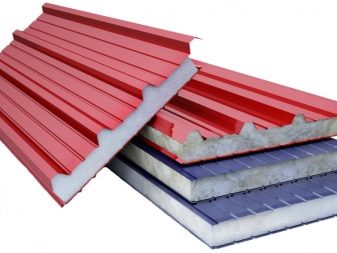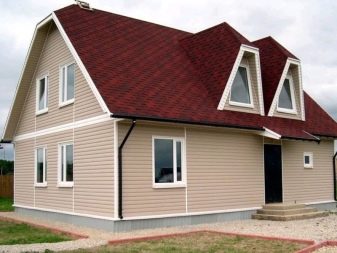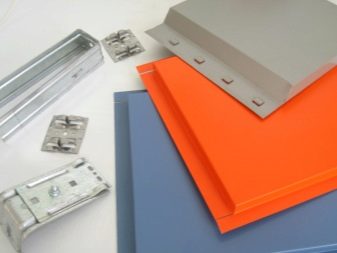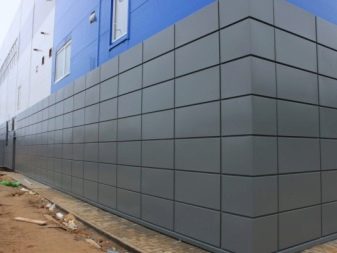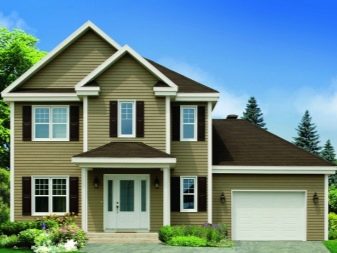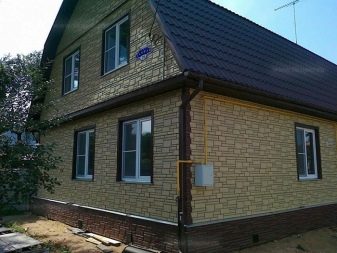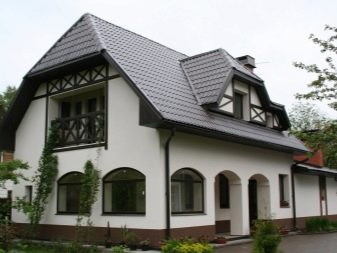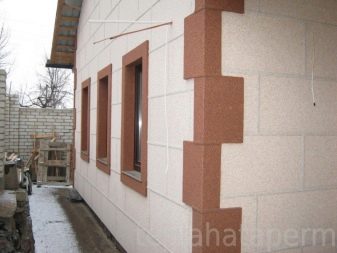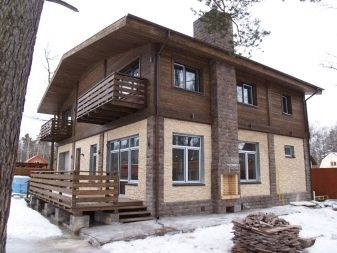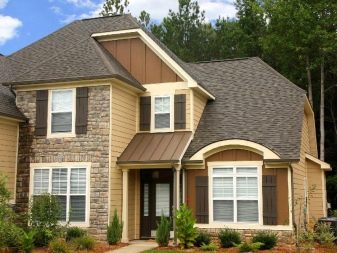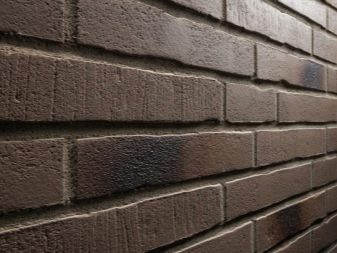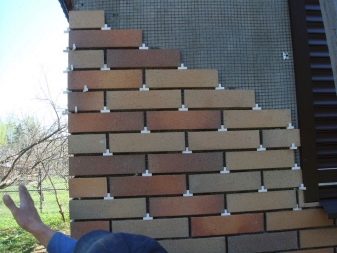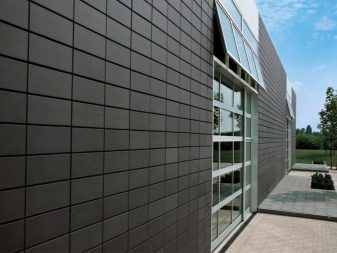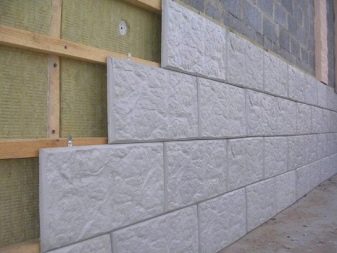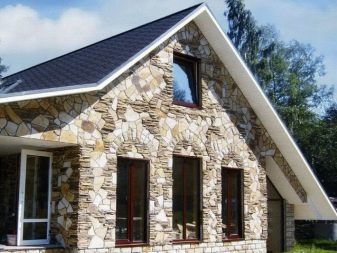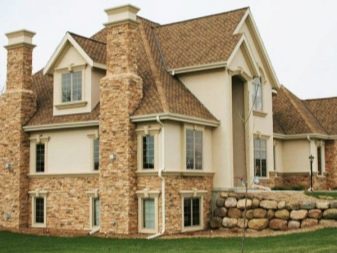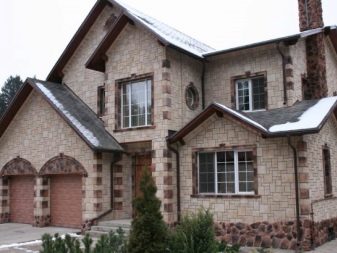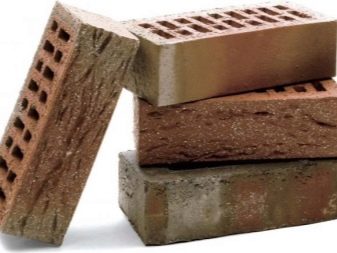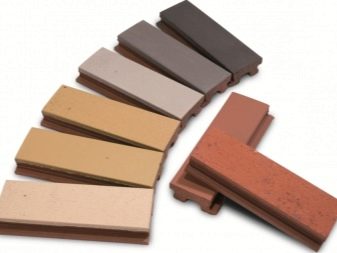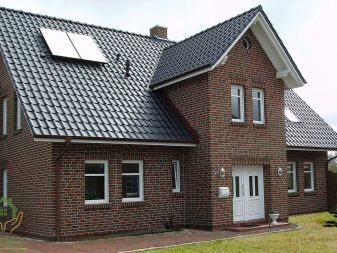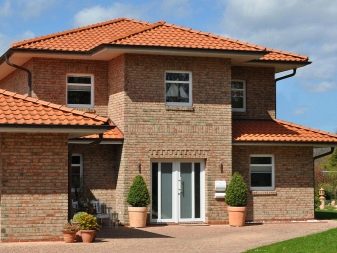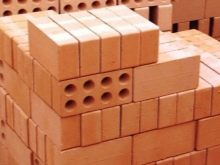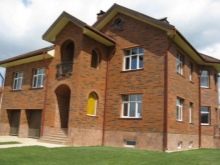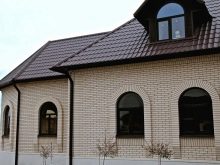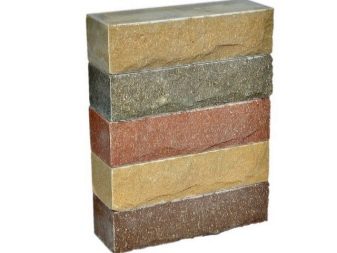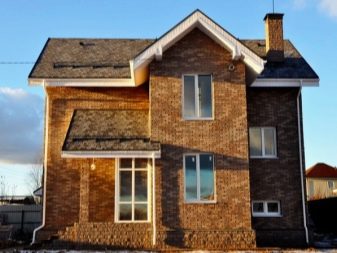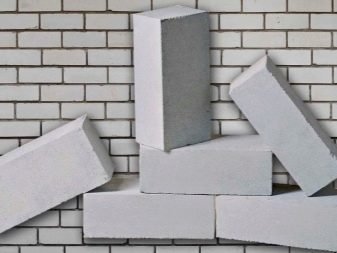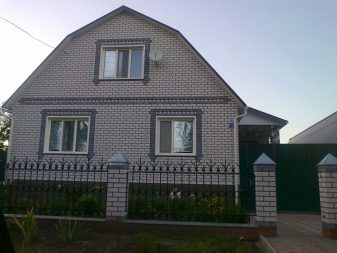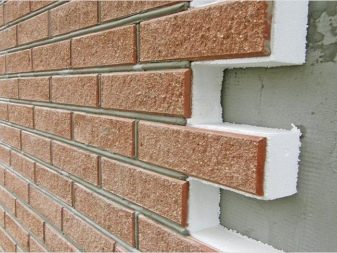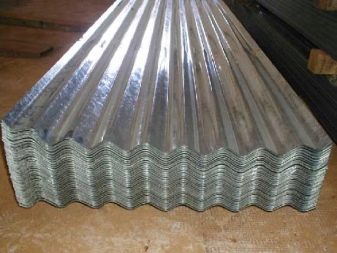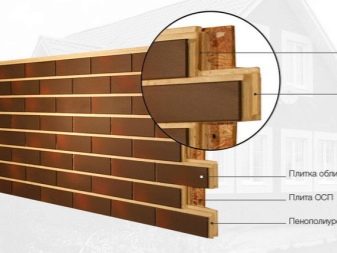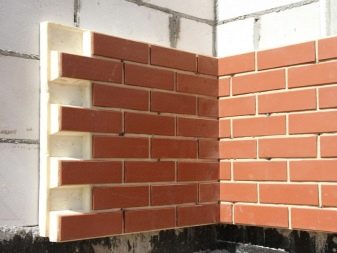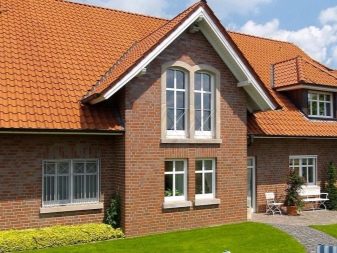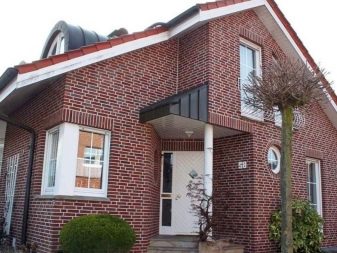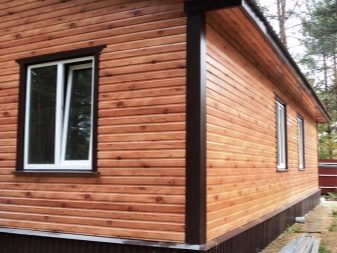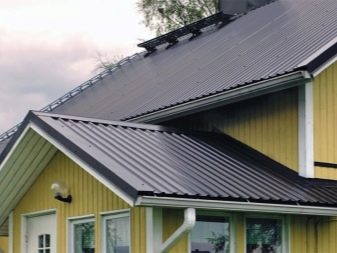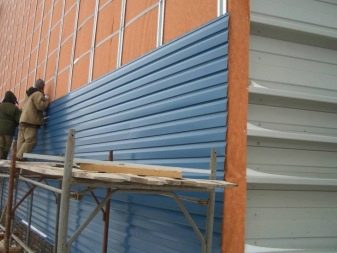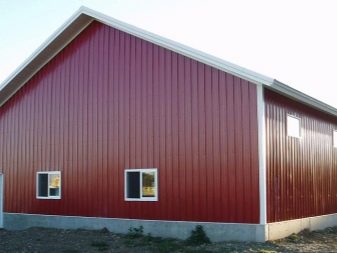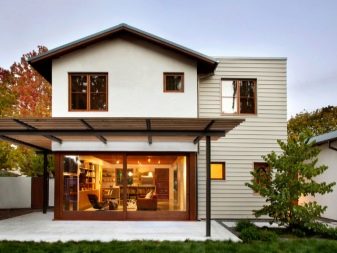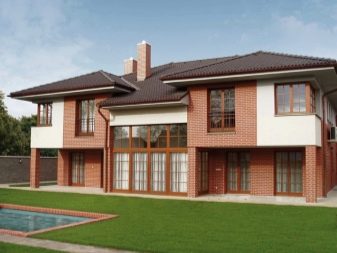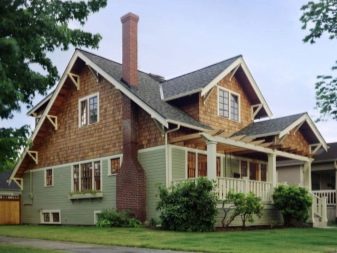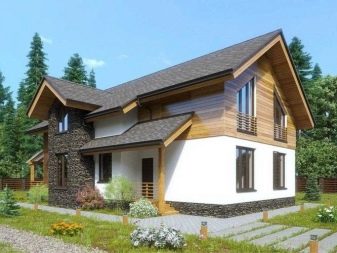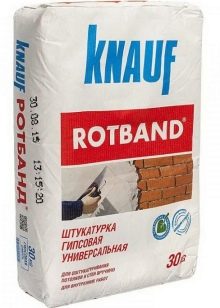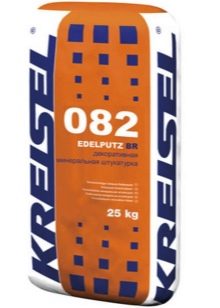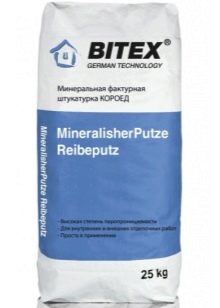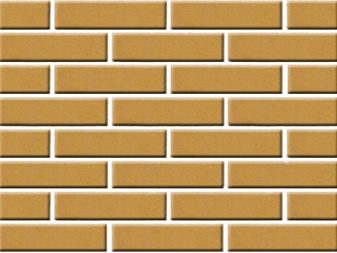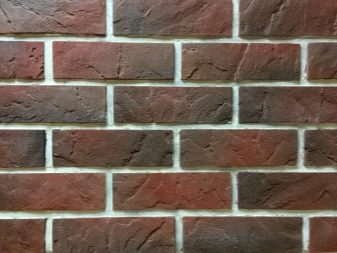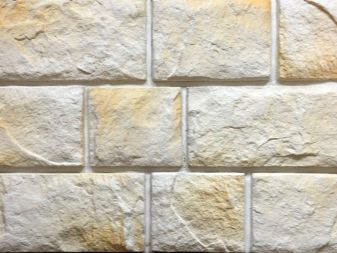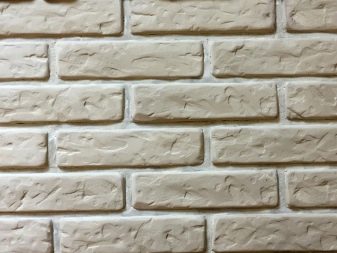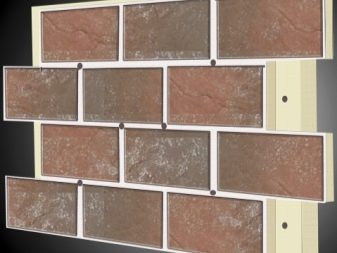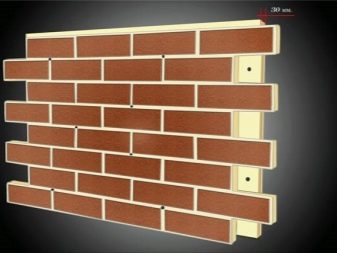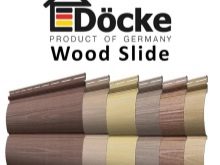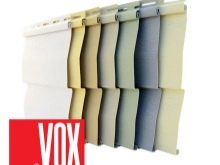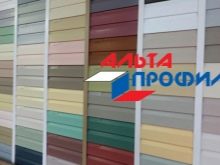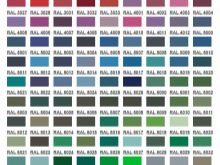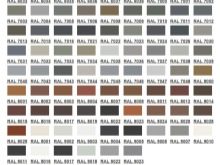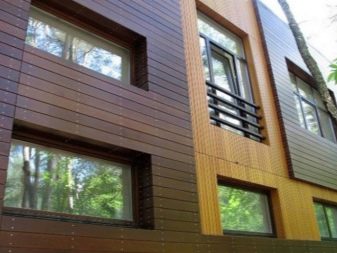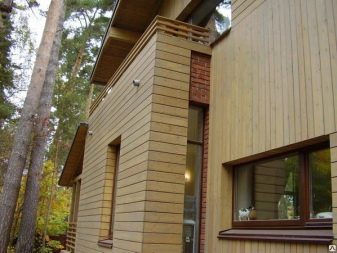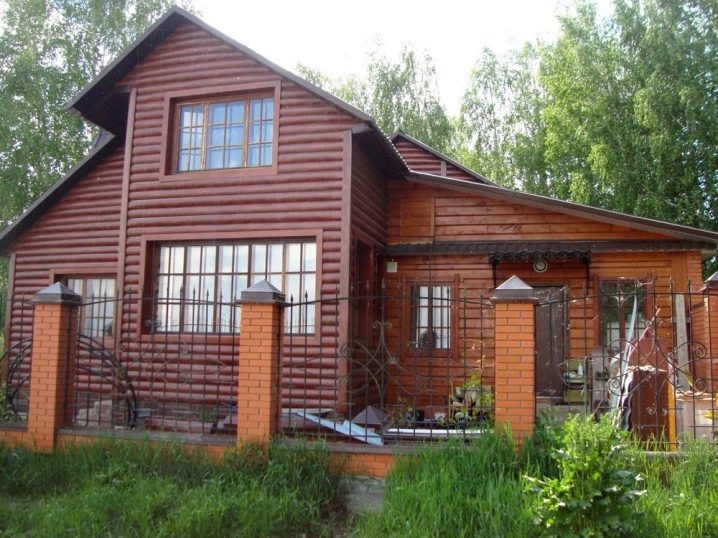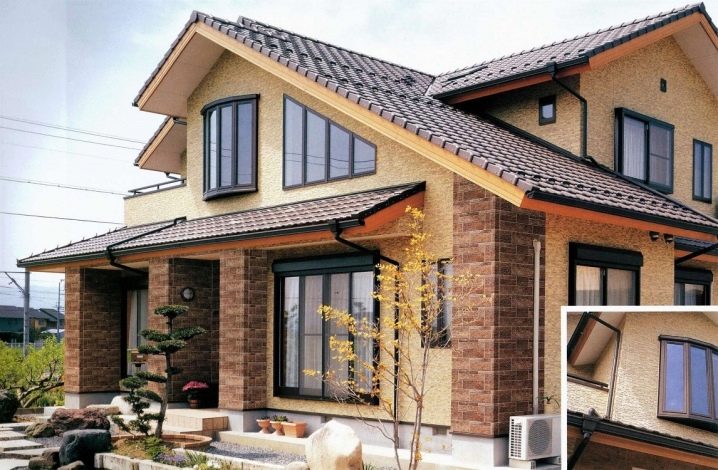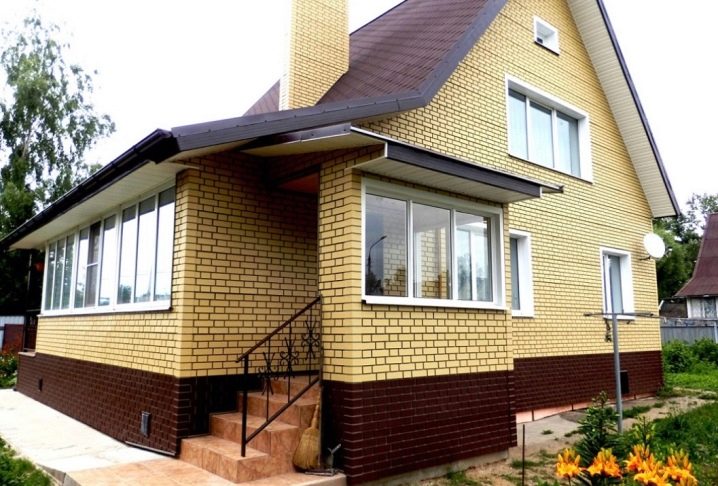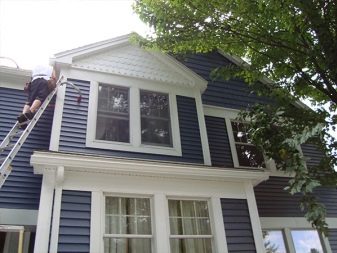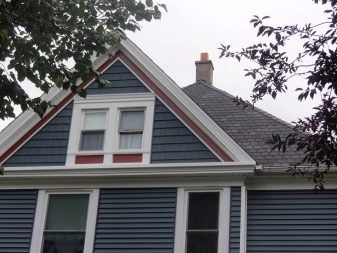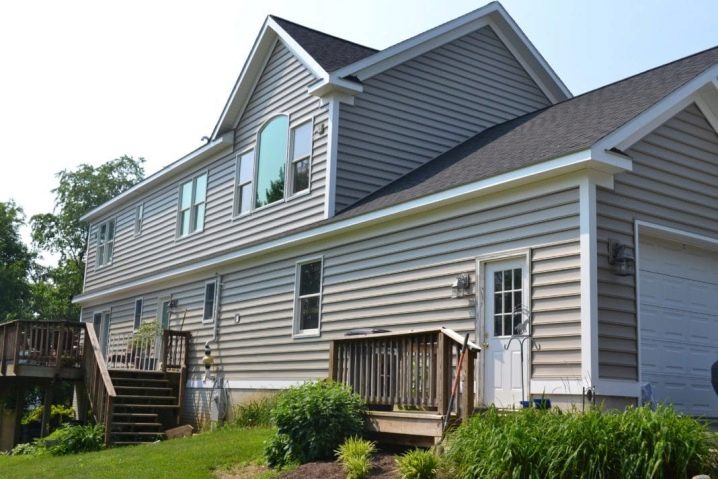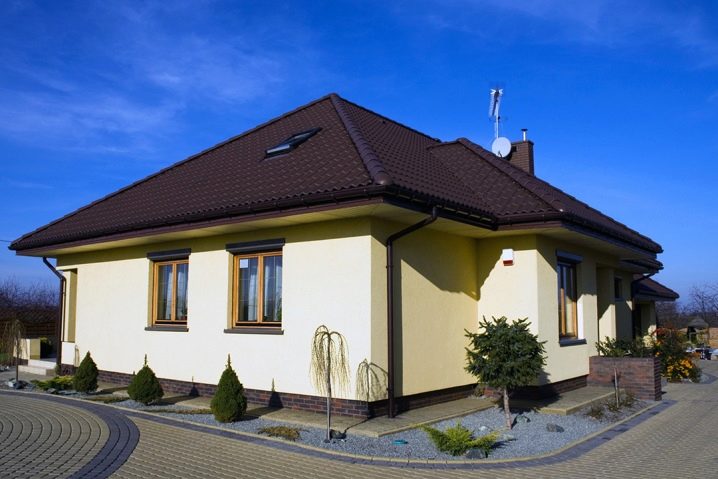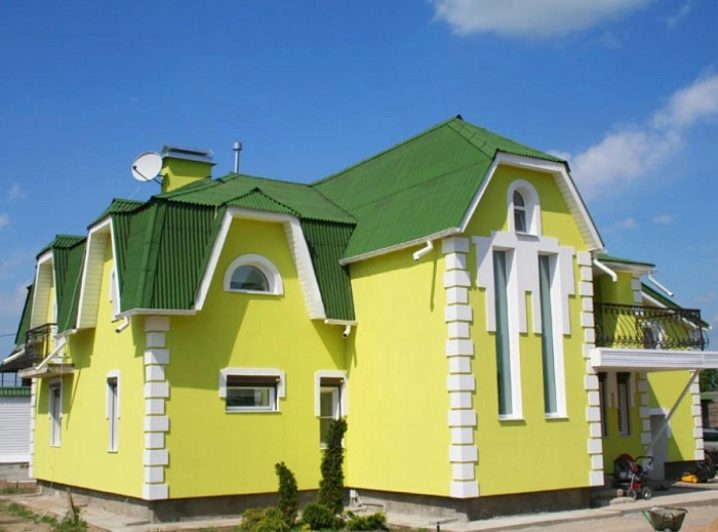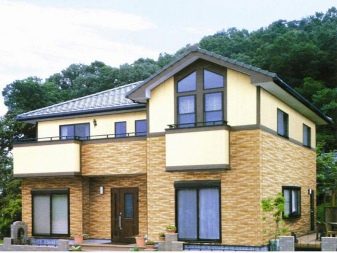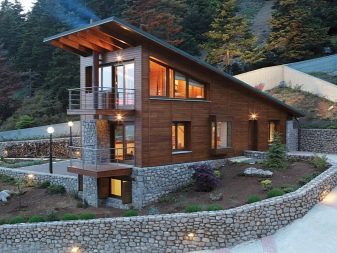Overview of modern materials for finishing the facade of a private house
Facing materials for the facade of the building perform a protective and decorative role. They allow you to make the structure not only attractive and respectable, but also to improve its performance. Let's look at the advantages and disadvantages, as well as the features of the most popular materials for exterior decoration.
Requirements and norms
Today, the construction market is represented by a variety of facade materials, differing in composition, properties, appearance.
In this regard, it is important to determine what kind of material is suitable for a particular structure.
When choosing a material, the following criteria for its evaluation should be considered:
- strength, reliability (the facade of the house is subject to heavy loads, including mechanical damage, so the coating must withstand them);
- moisture resistance (the extent to which the compositions for finishing the house are able to withstand moisture, depends on its performance, appearance and durability);
- fire resistance (the ideal material for finishing is non-flammable, although this is quite rare, so it is important to at least exclude self-ignition and the release of toxins during combustion);
- weather resistance (i.e., resistance to environmental factors, primarily UV rays);
- wind-shelter properties of the material (an important criterion when choosing hinged panels and plates mounted on modern buildings; the effect is achieved by a special lock fastening);
- frost resistance (the ability of the coating to withstand freezing and thawing cycles without loss of material geometry and performance);
- biostability (ability to resist the effects of insect pests, rodents, the absence of mold and fungus on the surface);
- environmental friendliness (one of the most important criteria for finishing materials when facing a country house or any room that presumes the residence or long-term stay of people in it);
- long service life (a rare owner wants to change the lining every 2-5 years, so modern facade materials are designed for 20-100 years of service);
- ease of care (most of the attached materials do not require constant care and even have the ability to self-cleaning, others, such as wood, imply regular impregnation with special compounds).
If we talk about aesthetic criteria, then this is, of course, an attractive appearance. Today's facing structures and plates are distinguished by a variety of designs and textures (further review of examples of exteriors is a convincing confirmation of this). Separately, it is necessary to select panels imitating natural surfaces (stone, brick, wood, plaster). Modern technologies allow to produce them as close as possible to natural materials in their color and texture.
Sometimes, imitation cannot be determined even on closer inspection.
Exterior design
The material used for finishing causes the ways of its installation, in connection with which The following lining options are distinguished:
- wet (building mixtures are used);
- dry (finishing materials are fastened with bolts, dowels and other fasteners).
Depending on whether there is a small air space between the facade and the wall, the facades are distinguished:
- ventilated (assume the presence of a gap between the material and the wall or insulation, necessary for air circulation and removal of excess moisture);
- non-ventilated (material is attached directly to the wall).
Material for exterior treatment, as well as the type of facade, is determined by the characteristics of the structure. For example, for a house of foam blocks, brick, stone, or facade tiles, in other words, hinged systems, composite material and traditional cladding, will be the optimal facing materials.
For frame country houses it is better to use leafy versions of plating. The galvanized professional sheet will provide additional support to the structure, but it will not require additional strengthening of the foundation.
It is important to correctly combine insulation and facing materials. The main rule - one of the components must be incombustible. So, for fiber cement incombustible slabs you can usemineral wool insulation. It is not recommended to use them in combination with vinyl siding.
Wet and light plaster
Decorative plaster allows you to create an externally expensive, aesthetically attractive and original facade, which, if desired, can be painted. It is an eco-friendly material that allows walls to "breathe." Suitable for ventilated facades, but the building needs high-quality internal sound and heat insulation, since the plaster does not provide insulation and protection from noise. All types of plasters tolerate temperature fluctuations, are not afraid of moisture and direct sunlight.
The disadvantages of the material is the complexity of the application, the need for careful preparation of the walls (leveling, preliminary antiseptic processing, application of primer compositions). In case of non-compliance with the installation technology, cracking and peeling of the plastered layer is possible.
The following types of plaster are distinguished.
- Mineral Type of plaster, which is the cheapest way to finish the walls, which leads to its wide distribution.
Of the obvious features - the absolute incombustibility,that allows you to combine material with flammable insulation.
Suitable for all types of surface, but has a low elasticity. This causes cracks during shrinkage of the structure, which is why it is not suitable for newly built buildings. The service life is on average 12-15 years.
- Acrylic. It is characterized by high elasticity, and therefore suitable for the design of the walls, even just built buildings. Possessing higher strength and moisture resistance, it demonstrates a longer, up to 18 years, period of operation. The disadvantage of acrylic blend is its flammability, so it should not be used in combination with combustible insulation, for example, mineral wool. Usually it is combined with foam insulation materials. In addition, the surface attracts dust, and it is unacceptable to wash it. It is necessary either to regularly clean and care for the facade, or to be prepared for the fact that it will quickly lose its visual appeal.
- Silicate. Material with excellent performance properties, including high elasticity, the ability to repel dust and pollution, the tendency to self-cleaning during rain and long service life. The latter reaches 30 years.These characteristics are explained by the presence of potash glass in the composition. The peculiarity of the material is its quick hardening, therefore, it is necessary to apply plaster quickly, a team of specialists will be required. In addition, it requires a special primer, which also increases the cost of installation work. The price for the mixture is also rather big.
- Silicone. The material, which has almost no flaws, like all types of plasters, the composition tolerates heat and frost, temperature “jumps”, the effects of moisture and direct UV rays, is environmentally friendly and vapor permeable. At the same time it is characterized by durability and increased wear resistance, it is not combustible, it is combined with all types of surfaces and heat insulators. The disadvantage is the high cost, which, however, is leveled by the increased technical characteristics of the mixture.
Suspended structures
Suspended construction involves the use of crates, which is mounted on the finishing material. This method is becoming increasingly popular because it allows you to create a ventilated facade, use insulation of the desired thickness.
Thanks to the crate, you can hide the irregularities and minor defects of the walls, and to carry out installation even at low temperatures.
Lathing is usually made of wooden bars or metal profiles. The latter option is preferable because it does not require pre-treatment of the elements of the batten with fire retardants and similar compounds for wood.
A kind of mounted structures is considered siding. It is a panel, similar in size to the size of the boards. At the same time, the material has special grooves and locking systems, thanks to which it is assembled like a children's designer. This type of installation allows you to make it simple and quick, it is possible to carry out installation work all year round. The material has enhanced performance properties, including hydro-windproof.
The size and design of the material is very diverse. These can be either colored models (bright glossy or quieter, neutral matte panels) or imitation of the texture of any natural material (brick, stone, wood). The material is easy to clean - most surfaces have a self-cleaning function.Possible wet cleaning coatings.
The following main types of siding panels are distinguished.
- Plastic. In the base - PVC, as well as various modifiers and pigments. Such panels are strong enough, but with increased mechanical effects (impacts) may crack. The material has moisture resistance, withstands high and low temperatures, their abrupt change, resistant to UV protection.
Low weight (up to 5 kg / sq. M) does not require strengthening the foundation. The disadvantage is the low rate of fire safety.
- Metallic. Metal siding is based on aluminum or galvanized steel profiles. Metal siding is characterized by a large margin of safety compared to PVC-equivalent. The features of the applied technologies, including special impregnation, provide anticorrosive protection of the material, and with it durability. It also exhibits high weather resistance, but is used only on hardened bases due to the increased weight of the material.
- Wood. Wooden profile is a dried or treated with antiseptic board or profile. The material is fully environmentally friendly, vapor-permeable, has high thermal insulation performance, resistant to high temperatures.
Natural wood trim looks elegant and noble.
However, despite the processing of wood panels with special compounds, their service life is short. During operation, siding requires regular maintenance.
- Fiber cement. The panels are made of cement mortar and dried cellulose, which results in a durable, wear-resistant material with enhanced sound and thermal insulation characteristics. Among the advantages - impact resistance, weather resistance, preservation of the shade of the panels, even under the influence of direct sunlight, due to ceramic dusting, high rates of moisture resistance. The composition of the material causes its large weight (up to 25 kg / sq. M), which makes it possible to use it only on fortified foundations.
Separately, it is necessary to allocate basement siding, designed for lining the bottom of the building. It has a greater thickness of profiles, the best indicators of weather resistance and moisture resistance, resistance to mechanical damage. This is due to the fact that the basement of the house more often than others is subjected to shocks and other damage, freezing, moisture and other negative environmental factors.
The socle siding is rather a rectangular panel.Their width is usually equal to the height of the basement and starts from 60 cm. This causes ease of installation.
In some respects, from the point of view of fastening and the possible materials used for manufacturing, with siding, there are front panels. They can have a square or rectangular shape, various dimensions. Some plates are composed of insulation. The layering of the panels ensures their high performance properties.
Another popular type of attachment is sandwich panels. They represent a "sandwich" in which between the 2 layers of hard material (usually metal) is laid the "middle" of insulation. The strength and durability of the design is provided by using the method of hot pressing. The front side of the "sandwich" can be painted in any shade, be smooth or have a relief.
Sandwich panels are highly resistant to the effects of fire and moisture, demonstrate excellent thermal insulation properties with low weight. The material is easy to install, and if a separate section is damaged, you can only replace it, without going through the entire facade.
Ventilated facades can also be created using facade cassettes.
If earlier they were used for cladding of administrative buildings, now they also trim private buildings. This is due to the durability and reliability of the material, its weather resistance. Externally, the cassettes are squares and rectangles of aluminum, steel, more rarely copper, covered with a protective polymer layer. The size and design of the cassettes may be different.
Materials for facing: pros and cons
Each of the presented materials has specific advantages and disadvantages. At the same time, even within the same type, materials may have polar characteristics according to a certain criterion. For example, fiber cement and metal siding are non-flammable, while plastic is not highly fire resistant.
When selecting a material, one should focus not only on the pros and cons of the material, but also on the structural features. So, for a wooden and log house is better to choose ventilated facades. In this regard, even the highest quality and expensive plaster will be inferior in its characteristics to siding or cladding panels.
But the brick or stone buildings (which are themselves environmentally friendly) are preferably decorated on the outside with decorative plaster. Being completely natural, it contributes to the removal of moisture from the building, maintaining heat in the cold season and creating a pleasant coolness in the heat.
It is also important to consider the climatic conditions. For example, having a number of advantages wood trim will quickly become useless in seaside areas. To sheathe a house is better with panels or slabs. This hydro-windproof material will withstand squally gusts of wind and will literally repel moisture.
Modern facing material must be different moisture resistance. Some surfaces (plaster, siding and panels, clinker tiles) have low moisture absorption, while others (most types of bricks) cannot boast of similar characteristics.
The moisture resistance of the material directly affects how the facade withstands frost. At high moisture absorption, moisture accumulates in the pores of the coating, which freezes and expands at low temperatures.
As a result, the surface is covered with cracks, the operational properties of the lining are lost, its appearance suffers.
Clinker tiles
Visually, the material is a regular brick shape. The material is based on slate clay, which is subjected to high-temperature calcination. In the process of the latter, the clay changes its yellowish tint to terracotta, brown, beige (depends on the initial state of the clay and the features of the technologies used).
The main feature of clinker is its increased strength, frost and seismic resistance. The advantages of the material are also high rates of water resistance, resistance to temperature differences, environmental friendliness, variety of choice. It is suitable for the design of ventilated facades of buildings and has a fairly high cost. However, the price range is quite wide: from premium models to economy versions.
In addition to the clinker, there are ceramic and concrete tiles. They are characterized by durability, wear resistance and low moisture absorption. Concrete tiles do not tolerate temperature fluctuations, may have disturbed geometry, has considerable weight.Ceramic tiles are suitable for both dry and wet installation.
Natural and artificial stone
Stone facing belongs to the category of strong and durable. When choosing a natural stone, you should do this taking into account the climatic conditions. So, marble is unsuitable for regions with high humidity, while limestone is not used in areas with a harsh climate.
Natural stone undergoes complex processing., including its purification, the elimination of background radiation, giving the desired shape. Naturally, all this affects the cost of the finished product, which is very high. The large weight of the material necessarily requires strengthening the foundation. It should be noted that buildings decorated with natural stone look respectable, and such a facade can last up to 100 years. True, with regular care.
Today, those who wish to decorate their homes with marble stone are increasingly using an artificial counterpart. By its strength and durability, this material is not much inferior to a natural mineral, but at the same time it has a lower cost and a lighter weight, easier installation.Artificial stone is based on polyester resins, modifiers and pigments, as well as small fraction stone chips.
The latter provides the strength and attractive appearance of the material, and the resin - its increased water resistance, high antibacterial properties, ability to self-purification.
As for appearance, the material imitates any stone surface. At the same time, it is not always possible to find a “substitution” even on closer examination - the color and texture are so close to the shade and structure of a natural stone. Under the finish is usually hiding a cellular concrete or brick wall, at least - wooden surfaces.
Brick
It consists of only natural ingredients, so you can confidently declare its environmental friendliness. Moreover, the presence of micropores in the material allows the walls to "breathe", which contributes to the creation of a favorable climate in the building. In addition, the material is not afraid of frost, for a long time retains resistance to UV exposure.
Using different types of brick and its laying, it is possible to create original and unique facades. A big plus: in case of damage to a fragment of the facade, you can make a spot repair. Brick laying is a rather laborious process that requires a professional approach.It is also important to use it only on a reinforced foundation and after careful waterproofing of the base. Of the significant drawbacks - low heat capacity.
A brick can differ in composition and method of production, in connection with which it is customary to single out the following types of brick.
- Clinker. The basis of the brick becomes plastic clay, which is subjected to roasting and pressing. If we talk about the technical properties of the material, then it is the best among other types of bricks. Clinker modification is characterized by high mechanical strength, heat resistance and resistance to direct sunlight. Material frost resistance is 300 cycles. The clinker brick is resistant to aggressive media, has a low coefficient of water absorption. The undoubted advantages are also environmental friendliness and ease of care - just wash the facade. Among the shortcomings - the high cost and heavy weight. An alternative to this type of brick can be a thinner, and therefore lightweight, clinker tiles.
- Ceramic. A widespread type of brick,having a variety of colors and characterized by durability, resistance to temperature change, fire resistance and low cost. Unfortunately, the water absorption of ceramic bricks can reach 10%, which affects its frost resistance. In the presence of limestone in the composition, it will cause even more increased moisture absorption.
In this case, the limestone will be indicated in the finished product by darker patches.
It is among the batches of ceramic bricks that materials with broken corners and not the most perfect, in terms of geometry, forms are often found.
- Hyper pressed. The basis of such bricks are cement, special additives and shell rock subjected to semi-dry pressing. Visually, the material is difficult to distinguish from ceramic, but it is characterized by lower moisture absorption (is at an average level and is 5-6%) and, accordingly, better frost resistance, more accurate brick geometry. This durable and durable material is easy to install, however, the bricks have a high weight and a tendency to change shade during operation.
- Silicate. The composition of silicate bricks - cement-sand mixture, the method of production used - autoclaving. This ensures the affordability of the material. In addition to low cost, it is distinguished by the correct shape geometry, good sound insulation properties, durability. Moisture absorption is up to 15%, which causes instability of silica brick to frost. Large weight combined with high thermal conductivity and less attractive aesthetic qualities - all this is the reason that buyers rarely choose silicate bricks for cladding the facade.
Sheathing
The house covering, unlike facing, carries out 2 functions - decorative and bearing. The latter manifests itself primarily in frameless buildings. The external lining has a large load, so the materials used in this case are based on metal (most often steel), which necessarily has anti-corrosion protection. Sheathing of the house is usually performed using special metal sheets or thermopanels.
Thermopanels
They are a material consisting of a foil layer with a mounting system, insulation and a decorative layer.Polystyrene foam and its extruded version, as well as polyurethane foam, are used as insulation. Preference should be given to polyurethane foam products. Insulation in them contains the smallest air bubbles, which provides excellent thermal insulation performance with a small weight of the product.
Clinker tiles are commonly used as a decorative layer.
As a result of plating, imitation of brickwork is obtained, the choice of shades and textures is diverse.
The material is durable, 1.7 times warmer than many of the materials considered. It is rather simple to mount it, however it is important to observe fastening technology. The material should be fixed directly to the wall, avoiding the formation of air space between the panels and the facade. This is due to the vapor tightness of thermopanels.
The walls should be leveled beforehand, otherwise the sheathing of the skin should not be avoided, which will lead to the loss of its operational properties. Facing life is up to 30 years.
Sheets
Steel is usually used as the basis of sheets for cladding. It is covered with a layer of zinc, which allows you to achieve decent anti-corrosion performance.Additional protection from exposure to the environment (primarily UV exposure), as well as the decorativeness of the material is provided by applying a polymer coating.
The strength of the material and its wind-resistance is ensured thanks to the specific features of the form: a profiled galvanized sheet is used to create ventilated plating. Similar sheets are used as roofing for roof decoration.
This method of finishing is applicable not only for residential buildings, but also for household buildings, garages. Professional sheets are distinguished by their durability and durability, and new fastening systems guarantee ease of installation and durability. Choosing a particular shade or the direction of the "furrows", you can create unique exteriors.
Installation is made on the prepared frame. For insulation, you can choose polystyrene, mineral wool materials or purchase professional sheet, insulated in the factory. The latest models are 2 professional sheets, between which a layer of insulation is laid.
Combined solutions
Increasingly, private house owners are resorting to a combination of facing cottages.This method involves a combination of several textures within the same facade. It is noteworthy that the difference in texture is achieved both by using different materials and by using the same material with imitation of different surfaces.
The latter method is more convenient in terms of installation and preparatory work, as well as maintenance. In most cases, the basement of the building, corners, small architectural elements, door and window openings are distinguished by other materials. The combined decoration of the facade allows you to emphasize the complexity and sophistication of buildings of complex configuration and add a highlight to buildings that are simple in shape.
For classic exteriors, a combination of stone and brick, as well as a combination of these materials with plaster, will do.
For houses in the style of Gothic or rustic, a combination of stone and plaster is chosen, adding forged elements to the exterior design. For a country house in a rustic style using stone, wood and brick. For modern buildings in the spirit of minimalism - a combination of plaster and concrete, wood and brick.
Manufacturers
The leader among manufacturers of wet facades is Ceresit, whose products account for 20–30% of the domestic market. The plaster mixes Knauf, Kraysel, and Bitex are also in demand. Durability and increased wear resistance indicators make it possible to use the products of these brands for finishing not only private but also public buildings.
- Those who are looking for high-quality thermopanels should pay attention to the products of the domestic manufacturer "Workshop facade materials" (IMF). Innovation, modern equipment and careful quality control at all stages of production - this is what allows the manufacturer to occupy a leading position. The thickness of the insulation, depending on the collection is 30-100 mm. Appearance is also represented by several collections: “Classic” (traditional brickwork), “German collection” (clinker popular in Germany), “Stone collection” (imitation of stone surfaces), “Spanish collection” (imitation of texture of ancient Spanish castles). The average price is from 1500 to 3500 rubles.
- Another manufacturer of sheathing thermopanels, Termosit, boasts the quality and safety of its products, not inferior to European counterparts. Insulation thickness depending on the model - from 30 to 80 mm. Cost - in the range of 1000-2000 rubles per square meter. m
- Top siding manufacturers are brands. Docke (large selection of wood panels, as well as profiles of unusual pastel shades), VOX (a large range of panels imitating rare woods, color profiles of a delicate shade), Alta Profile (the undoubted leader of the Russian market, producing siding with imitation of wooden surfaces, color profiles, as well as innovative frost-resistant panels).
- A wide range of hinged facade systems is presented by the company. Ozersk Mineral Coating Plant. The main products are facade cement-based slabs, as well as additional elements, subsystems.
Custom panels are custom-painted in shades presented in the RAL catalog.
Beautiful examples
Habitual for all wood panels allow you to get unusual design solutions.It is enough to combine materials of different color, changing their direction within the same facade.
The most popular options for trimming a tree or under a tree are Eurolining and block house (imitation logs). Country houses and cottages decorated in this way look cozy and noble, and under the skin there can be a lot of building materials (frame, brick, blocks or pre-fabricated frame).
For buildings in the style of country and Provence can be used as a finishing material painted board or its siding imitation.
Not less beautifully and even outwardly durable look houses, trimmed with artificial stone or panels and siding with imitation stone surface. The classic is a brick veneer. To create it, you can use not only brick, but also a clinker tile or siding with imitation masonry.
Colored siding panels look original and allow you to create a unique exterior. Designers recommend combining 2-3 types of panels that are close in tone, or use contrasting solutions. The direction of the profile may also be different.
Vertical siding is able to visually "stretch the room", and the use of panels laid at an angle will give volume and expressiveness.It is not recommended to use horizontal monochrome panels for covering long, simple in construction buildings. It looks monotonous and unattractive.
Using the same decorative plaster with a different method of application allows you to get a completely different external facades. Habitual are plastered in light shades of the surface, it is an excellent solution for exteriors in classical style, for example, traditional English or modern.
Color plasters look no less interesting.
It should be noted that the greatest organicity is usually achieved by combining various textures. Wood and stone, brick and stone, stone and plaster harmoniously “get along” within the same facade.
How to choose a design for finishing the house, see the following video.
